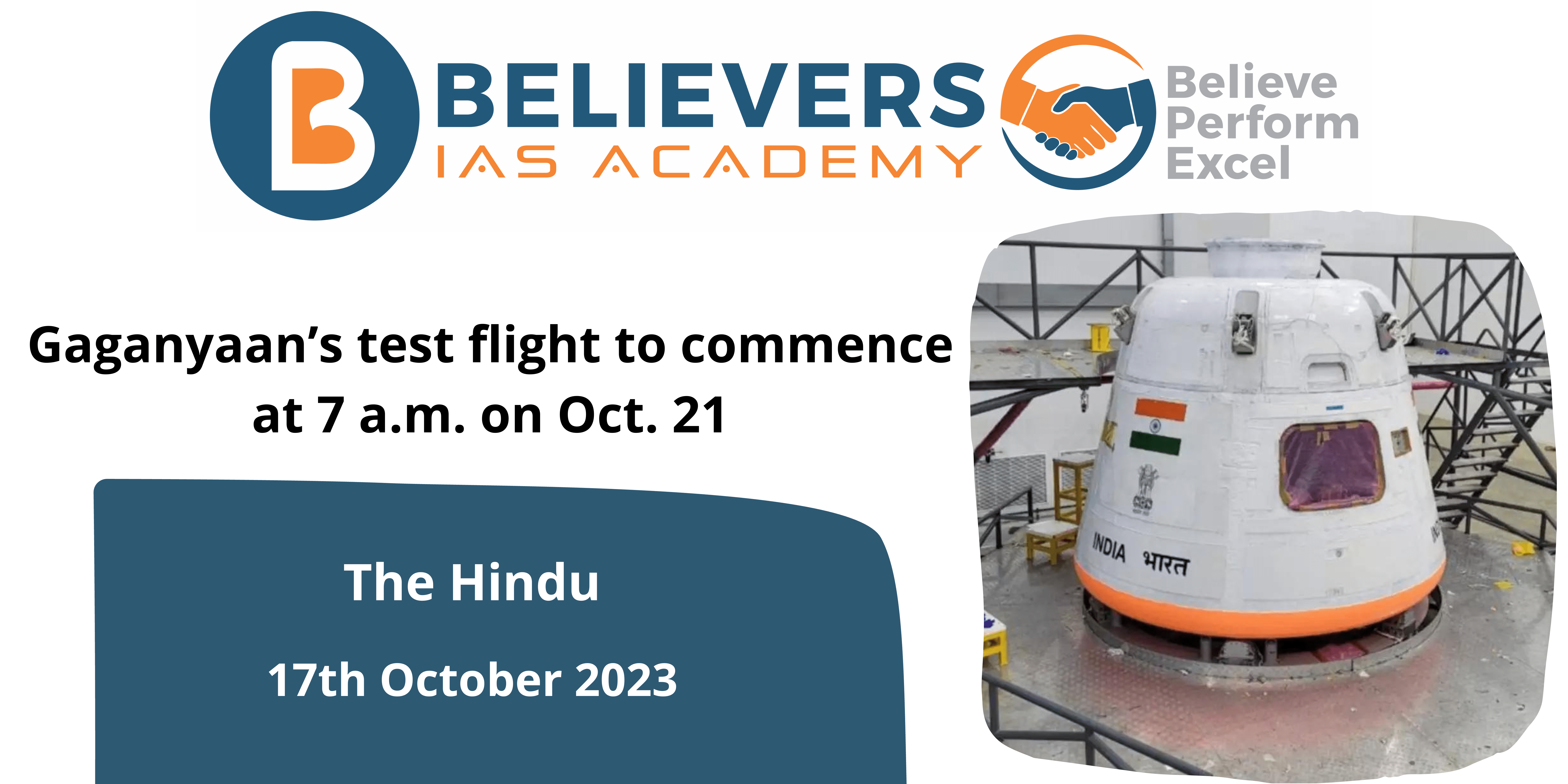Gaganyaan’s test flight to commence at 7 a.m. on Oct. 21
Context
Mission Gaganyaan: The Indian Space Research Organization (ISRO) announced on X (previously Twitter) that the TV-D1 test flight is planned for October 21, 2023, between 7 and 9 a.m. from SDSC-SHAR. TV-D1 will show off how well the Crew Escape System works.
What is Mission Gaganyaan?
- The first human space mission from India is called Gaganyaan. Before the end of 2024, the mission aims to send at least three humans into low-Earth orbit. The mission’s name means “celestial vehicle” in Sanskrit.
- The Indian Space Research Organization (ISRO) is leading the Gaganyaan mission. Three flights are planned for the mission: one human spaceflight and two unmanned ones.
- A three-person crew will be sent into a 400-kilometre orbit for human spaceflight.
- The crew will land in the Arabian Sea or the Bay of Bengal and be transported safely back to Earth.
- An agreement was made by the French and Indian space agencies to collaborate on the Gaganyaan mission
- On October 21, 2023, between 7 and 9 a.m., the TV-D1 test flight is planned to depart from SDSC-SHAR, Sriharikota. A Human-rated LVM 3 will launch the Gaganyaan spacecraft from Satish Dhawan Space Centre.
What is the significance of the Mission Gaganyaan?
- Gaganyaan will raise the bar for science and technology while inspiring young people in India.
- It aids in the advancement of technology and industrial expansion for societal good.
- It involves numerous departments, industries, agencies, and labs.
- It encourages global cooperation and emphasizes the need for energy, water, and food security in the region.
How does it function?
- Development of the Crew Module: There are different stages of completion for the Gaganyaan mission’s Crew Module (CM). The integration and testing of an unpressurized version of the CM for TV-D1 is complete. Its size and weight are meant to mimic that of the real Gaganyaan CM. In addition to systems for deceleration, recovery, parachutes, recovery aids, actuation systems, and pyrotechnics, it contains redundant avionics for navigation, sequencing, telemetry, instrumentation, and power.
- Recovery: After the test, the CM will be retrieved in the Bay of Bengal by an Indian Navy dive squad and a specialist warship.
How will the test recovery vehicle work?
- Test Vehicle: For this abort mission, a single-stage liquid rocket has been built. It holds payloads, such as the crew escape system and the control module (CM), and it simulates an abort situation during ascent at a Mach number of 1.2, the same as that experienced by the Gaganyaan mission.
- At a height of around 17 km, the crew escape system will detach from the test vehicle, and several parachutes will be deployed to guarantee the safe descent of the CM into the water, 10 km off the coast of Sriharikota.
Conclusion
A crucial step forward in India’s ambitions to launch humans into space as part of the Gaganyaan mission has been reached with the successful execution of TV-D1. It contributes to the testing and validation of vital components required for future crewed space flights to be successful and safe.




